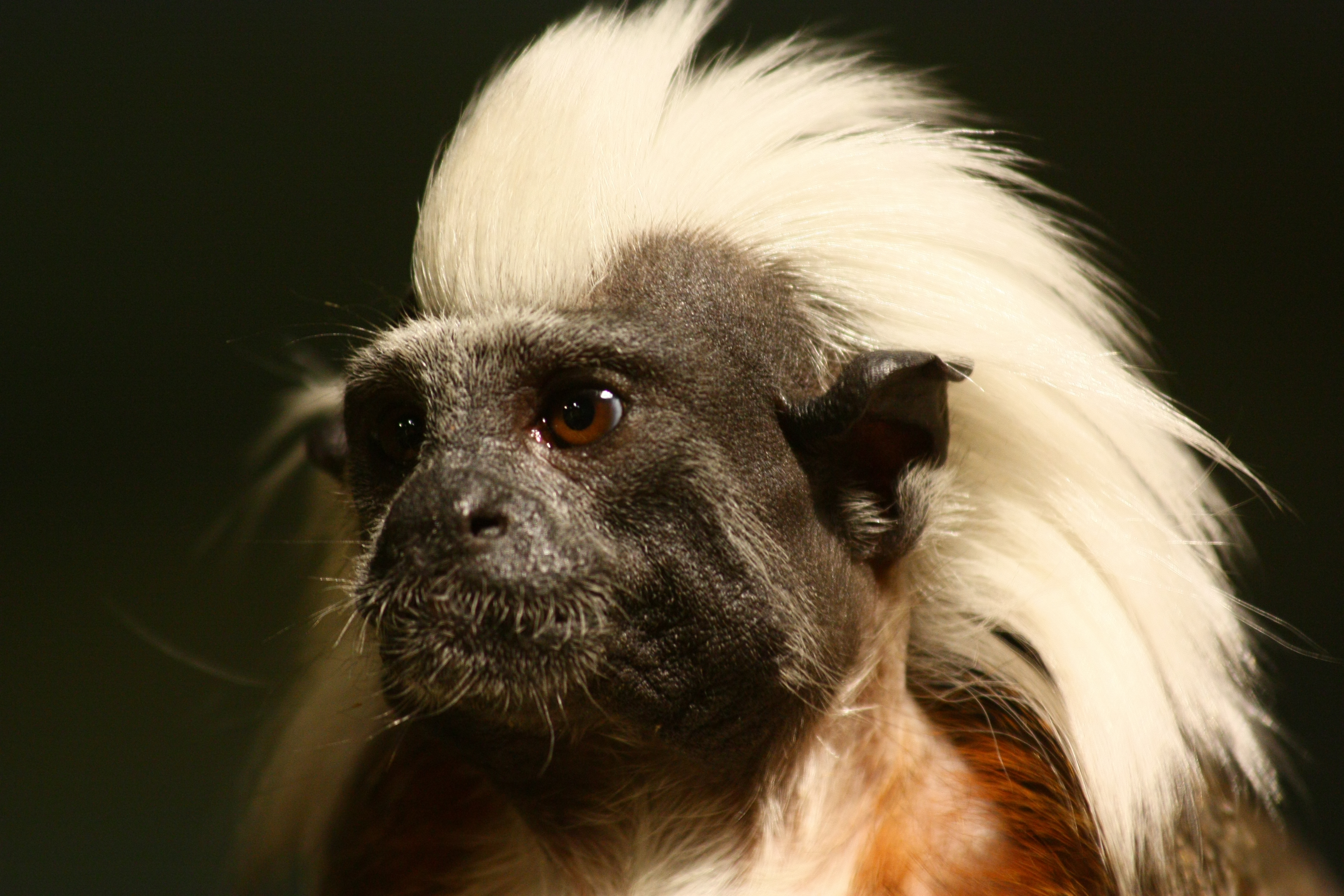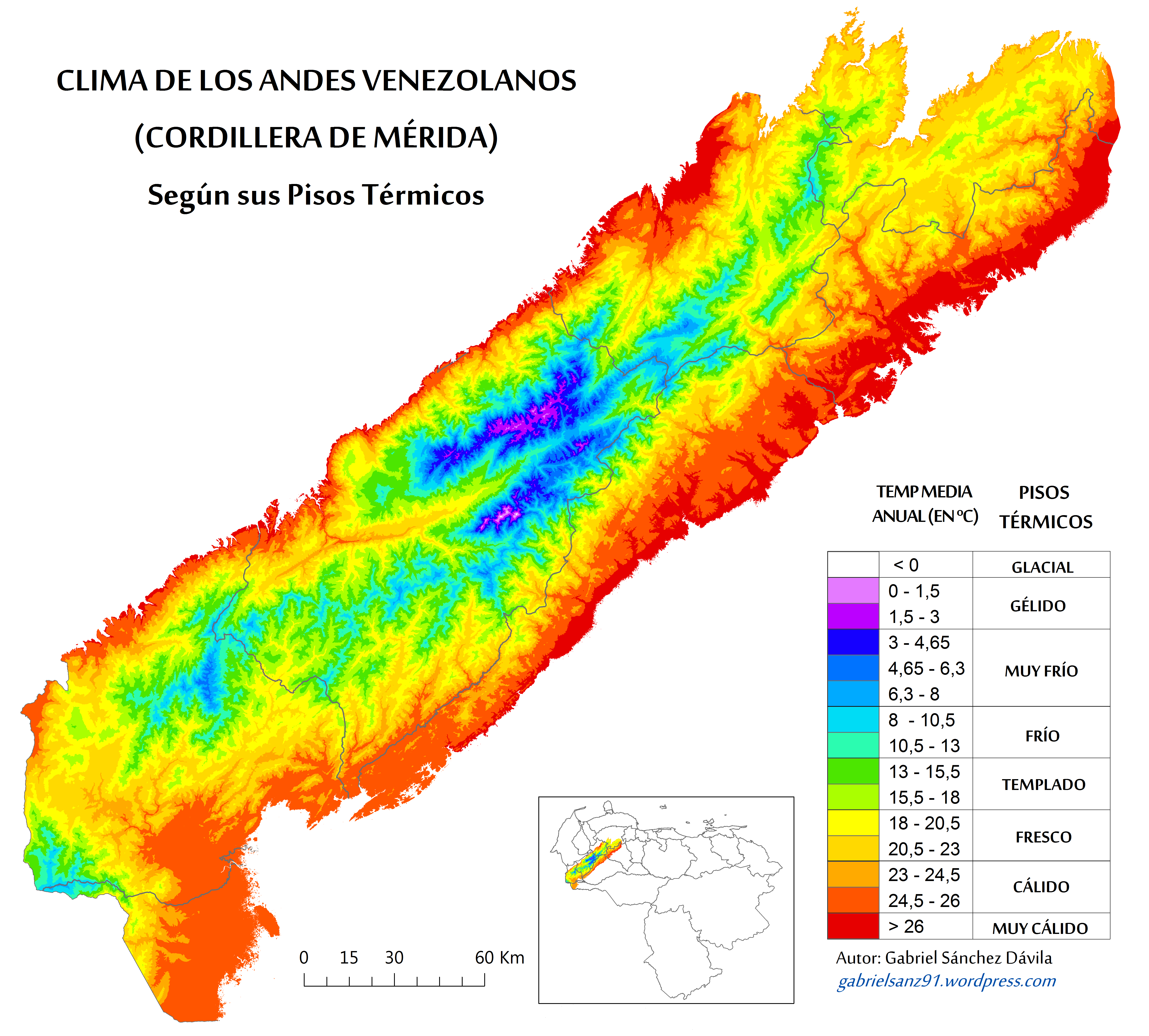|
Northwestern Andean Montane Forests
The Northwestern Andean montane forests (NT0145) is an ecoregion on the Andes mountains in the west of Colombia and Ecuador. Both flora and fauna are highly diverse due to effect of ice ages when the warmer climate zones were separated and the cooler ones combined, and interglacial periods when the reverse occurred. Because the environment is hospitable to humans, the habitat has been drastically modified by farming and grazing since the Pre-Columbian era. Geography Location The Northwestern Andean montane forests ecoregion extends along the Cordillera Occidental (Western Range) of the Andes in Colombia and the Cordillera Occidental of Ecuador. It covers an area of . In the extreme north the ecoregion merges into the Magdalena–Urabá moist forests ecoregion. Through most of its length in Colombia it transitions on the west into the Chocó–Darién moist forests and on the east into the Cauca Valley montane forests. The higher levels of the ecoregion give way to Northern An ... [...More Info...] [...Related Items...] OR: [Wikipedia] [Google] [Baidu] |
Cotacachi-Cayapas Ecological Reserve
Cotacachi Cayapas Reserve contains of land and is located in the Imbabura and Esmeraldas provinces of Ecuador from Quito. Elevations in the reserve range from about in the east to Cotacachi Volcano which reaches an elevation of in the southwest."Reserva Ecologica Cotacachi Caypas", http://www.birdlist.org/national-parks/reserva-ecologica-cotacachi-cayapas/reserva-ecologica-cotacachi-cayapas.htm , accessed 7 Jul 20`17 This nature reserve is partly rainforest. The park is a mix of many biological zones but the Andean (average 15 C) and Sub-tropical (average 25) zones are most common. The symbol of the reserve is a condor. This is one of the many protected areas in Ecuador. This reserve is a part of the Ecuadorian system of reserves and preserves and extends from the mountains of the Sierra to the western edge of the coastal rainforest in the Esmeraldas region. This region has not been extensively farmed and replanted with eucalyptus or pine trees, as so much of the intera ... [...More Info...] [...Related Items...] OR: [Wikipedia] [Google] [Baidu] |
Tumbes–Piura Dry Forests
The Tumbes–Piura dry forests (NT0232) is an arid tropical ecoregion along the Pacific coasts of southern Ecuador and northern Peru. The ecoregion contains many endemic species of flora and birds adapted to the short wet season followed by a long dry season. Threats include extraction of wood for fuel or furniture, and capture of wild birds for sale. Location The Tumbes–Piura dry forests ecoregion has an area of . The northern tip is in the southern coastal plain of Ecuador, while most of the ecoregion is in the northwestern coastal plain of Peru. It covers all or part of the regions of Tumbes, Piura, Lambayeque and Cajamarca in northern Peru. Further north the similar Ecuadorian dry forests extend along the coast of central Ecuador. The Andes rise to the east. The northern tip of the ecoregion adjoins the Guayaquil flooded grasslands. In the north it is bounded to the west by a stretch of South American Pacific mangroves and to the east by Northwestern Andean montane fore ... [...More Info...] [...Related Items...] OR: [Wikipedia] [Google] [Baidu] |
Hammond's Rice Rat
''Mindomys hammondi'', also known as Hammond's rice rat or Hammond's oryzomys,Musser and Carleton, 2005, p. 1149 is an endangered species of rodent in the tribe Oryzomyini of family Cricetidae. Formerly considered to be related with ''Nectomys'', '' Sigmodontomys'', ''Megalomys'', or ''Oryzomys'', it is now placed in then genus '' Mindomys'', but its relationships remain obscure; some evidence supports a placement near ''Oecomys'' or as a basal member of Oryzomyini. ''Mindomys hammondi'' is known only from Ecuador, where it occurs in montane forest; a record from the Amazon basin lowlands is dubious. Reportedly, it lives on the ground and is associated with water; others suggest it lives in trees. A large, long-tailed, and long-whiskered rat, its fur is buff above and abruptly lighter below. The front part of the skull (rostrum) is heavily built. The species is named after the collector who first found it, Gilbert Hammond. He supplied natural history specimens to Oldfie ... [...More Info...] [...Related Items...] OR: [Wikipedia] [Google] [Baidu] |
Equatorial Dog-faced Bat
The equatorial dog-faced bat (''Cabreramops aequatorianus'') is a species of bat in the family Molossidae. It is endemic to Ecuador. They are found in dry, tropical forests. The species is now endangered. The equatorial dog-faced bat feeds on insects. Taxonomy This species was discovered by Spanish zoologist Marcos Jiménez de la Espada in November 1864. Espada encountered four females in Babahoyo, Ecuador near the Guayas River in the crack of an old tree, roosting with harmless serotine bats. It was described by Ángel Cabrera in 1917. Its species name ''aequatorianus'' is derived from the Latin word '' aequatoriensis'', meaning "Ecuadorian." Though previously included in the genus '' Molossops'' and the subgenus ''Cabreramops'', the equatorial dog-faced bat is now often regarded as the sole species in the genus ''Cabreramops''. Range and habitat This species is found in dry, tropical forests in west central Ecuador. It has only been found in two locations. Conservation T ... [...More Info...] [...Related Items...] OR: [Wikipedia] [Google] [Baidu] |
Cotton-top Tamarin
The cotton-top tamarin (''Saguinus oedipus'') is a small New World monkey weighing less than . This New World monkey can live up to 24 years, but most of them die by 13 years. One of the smallest primates, the cotton-top tamarin is easily recognized by the long, white sagittal crest extending from its forehead to its shoulders. The species is found in tropical forest edges and secondary forests in northwestern Colombia, where it is arboreal and diurnal. Its diet includes insects and plant exudates, and it is an important seed disperser in the tropical ecosystem. The cotton-top tamarin displays a wide variety of social behaviors. In particular, groups form a clear dominance hierarchy where only dominant pairs breed. The female normally gives birth to twins and uses pheromones to prevent other females in the group from breeding. These tamarins have been extensively studied for their high level of cooperative care, as well as altruistic and spiteful behaviors. Communication betwe ... [...More Info...] [...Related Items...] OR: [Wikipedia] [Google] [Baidu] |
Baird's Tapir
The Baird's tapir (''Tapirus bairdii''), also known as the Central American tapir, is a species of tapir native to Mexico, Central America, and northwestern South America. It is the largest of the three species of tapir native to the Americas, as well as the largest native land mammal in both Central and South America. Names The Baird's tapir is named after the American naturalist Spencer Fullerton Baird, who traveled to Mexico in 1843 and observed the animals. However, the species was first documented by another American naturalist, W. T. White. Like the other American tapirs (the mountain tapir and the South American tapir), the Baird's tapir is commonly called ''danta'' by people in all areas. In the regions around Oaxaca and Veracruz, it is referred to as the ''anteburro''. Panamanians, and Colombians call it ''macho de monte'', and in Belize, where the Baird's tapir is the national animal, it is known as the mountain cow. In Mexico, it is called ''tzemen'' in Tzeltal; ... [...More Info...] [...Related Items...] OR: [Wikipedia] [Google] [Baidu] |
High Monte
The High Monte is a montane grasslands and shrublands ecoregion in Argentina. Geography The High Monte is located on the eastern slopes of the Andes, extending from the vicinity of Salta Salta () is the capital and largest city in the Argentine province of the same name. With a population of 618,375 according to the 2010 census, it is also the 7th most-populous city in Argentina. The city serves as the cultural and economic ce ... (24º S) south to Mendoza, Argentina, Mendoza (32º S). It is a landscape of mountains and endorheic basin, closed basins which lie between the Sierras Pampeanas on the east and the main spine of the Andes to the west. The southern portion of the High Monte is drained by the Desaguadero River (Argentina), Desaguadero River. The lower limit of soil cryoturbation along the eastern slope of Andes marks the upper boundary of the High Monte, extending up to 3000 meters at the northern end of the ecoregion, and between 1500 and 1700 meters elevation in Me ... [...More Info...] [...Related Items...] OR: [Wikipedia] [Google] [Baidu] |
Santa Marta Montane Forests
The Santa Marta montane forests (NT0159) is an ecoregion in the Sierra Nevada de Santa Marta, a massif on the Caribbean coast of northern Colombia. The ecoregion covers altitudes from near sea level up to around , where it gives way to Santa Marta páramo. The isolation of the massif and the range of elevations and climates has resulted in a wide variety of species including many endemics. The lower levels contained tropical rainforest, which has largely been cleared. Higher up, this gives way to cloud forest. Much of this has also been cleared for coffee plantations, pasture for sheep and cattle, and farming. Geography Location The ecoregion covers the slopes of the Sierra Nevada de Santa Marta in the north of Colombia, with an area of . The range rises to snow-covered peaks only from the Caribbean sea. The ecoregion is almost entirely surrounded by the Sinú Valley dry forests ecoregion. To the northeast and northwest it transitions directly into Guajira–Barranquilla xer ... [...More Info...] [...Related Items...] OR: [Wikipedia] [Google] [Baidu] |
Cordillera Oriental Montane Forests
The Cordillera Oriental montane forests (NT0118) is an ecoregion in Venezuela and Colombia along the east slopes of the eastern cordillera of the Andes. The extensive region of submontane and montane forests includes distinctive flora and fauna in the north, center and southern sections. The ecoregion is home to numerous endemic species of fauna. Despite extensive changes due to logging, farming and ranching, large areas of the original habitat remain intact, and the ecoregion has rich biodiversity. Geography Location The Cordillera Oriental montane forests ecoregion extends along eastern slopes of the Cordillera Oriental of the Colombian Andes, mostly in Colombia but in the northwest of Venezuela to the west of Lake Maracaibo. It has an area of . At the northern end of the cordillera the ecoregion gives way to Guajira–Barranquilla xeric scrub. To the east, from north it south it adjoins the Maracaibo dry forests, Catatumbo moist forests, Venezuelan Andes montane forests, A ... [...More Info...] [...Related Items...] OR: [Wikipedia] [Google] [Baidu] |
Venezuelan Andes Montane Forests
The Venezuelan Andes montane forests (NT0175) is an ecoregion in the northern arm of the Andes in Venezuela. It contains montane and cloud forests, reaching up to the high-level Cordillera de Merida páramo high moor ecoregion. The forests are home to many endemic species of flora and fauna. Their lower levels are threatened by migrant farmers, who clear patches of forest to grow crops, then move on. Geography Location The Venezuelan Andes montane forests ecoregion covers most of the Venezuelan states of Mérida and Trujillo, much the state of Táchira and the highlands of the states of Lara and Barinas. It includes a small area in Colombia. It covers the lower part of the Venezuelan extension of the Cordillera Occidental of the northern Andes. It has an area of . To the southeast it adjoins the Llanos and the Apure–Villavicencio dry forests, and to the southwest adjoins the Cordillera Oriental montane forests. To the northwest it adjoins the Catatumbo moist forests and the Ma ... [...More Info...] [...Related Items...] OR: [Wikipedia] [Google] [Baidu] |

.jpg)




